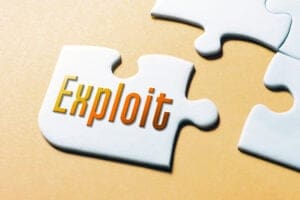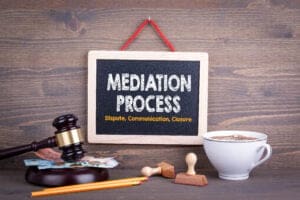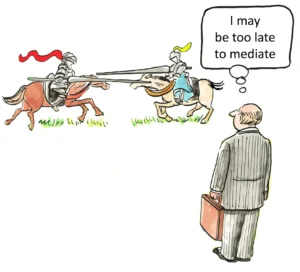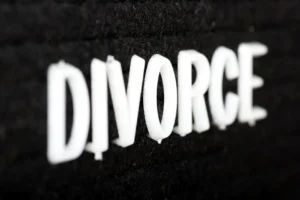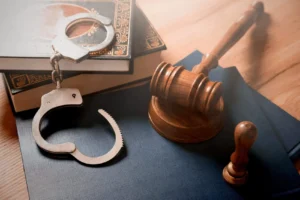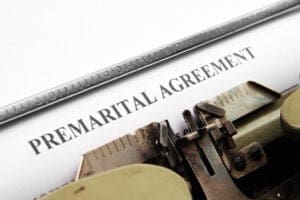Eyewitness Testimony: Reliability and Legal Challenges
In the realm of criminal justice, few elements carry as much weight as eyewitness testimony. The power of a witness pointing across a courtroom and declaring, “That’s him!” can sway juries and seal the fate of defendants. However, the reliability of such testimony has come under increasing scrutiny in recent years, as advances in forensic science and psychology have revealed the complex and often fallible nature of human memory and perception.
The legal system’s heavy reliance on eyewitness accounts has been a cornerstone of criminal proceedings for centuries. Yet, as our understanding of cognitive processes and memory formation has evolved, so too has our recognition of the potential pitfalls inherent in such testimony. Wrongful convictions based on mistaken identifications have highlighted the urgent need for reform in how eyewitness evidence is collected, presented, and evaluated in court.
The challenges surrounding eyewitness testimony are multifaceted, encompassing issues of memory reliability, the impact of stress on recall, and the influence of suggestive identification procedures. These concerns have prompted legal scholars, psychologists, and lawmakers to reevaluate the role of eyewitness evidence in criminal trials and to develop more robust safeguards against misidentification.
The Science of Memory and Perception
At the heart of the debate over eyewitness reliability lies the complex nature of human memory. Contrary to popular belief, memories are not static recordings of events but rather dynamic constructions that can be influenced by a variety of factors. Cognitive psychologists have long studied the processes by which we encode, store, and retrieve information, revealing the malleable nature of our recollections.
Research has shown that memory is susceptible to distortion at various stages. During the encoding phase, factors such as stress, fear, or the presence of a weapon can significantly impact an individual’s ability to accurately perceive and remember details of an event. The storage phase is equally vulnerable, as memories can be altered or contaminated by post-event information, leading to what experts call “memory reconstruction.”
The retrieval of memories, particularly in high-pressure situations like police lineups or courtroom testimony, is also subject to error. Witnesses may unconsciously fill in gaps in their memory or be influenced by subtle cues from investigators or attorneys. This malleability of memory poses significant challenges for the legal system, which often relies on the presumed accuracy of eyewitness accounts.
Legal Standards and Eyewitness Evidence
The U.S. legal system has grappled with the complexities of eyewitness testimony for decades. In 1977, the Supreme Court established a framework for evaluating the admissibility of eyewitness identifications in Manson v. Brathwaite. This decision set forth a two-pronged test: first, whether the identification procedure was unnecessarily suggestive, and second, whether the identification was nevertheless reliable based on the totality of the circumstances.
While the Manson standard remains influential, it has been criticized for failing to adequately account for the scientific understanding of memory and perception. Some state courts have adopted more stringent standards for the admission of eyewitness evidence. For example, in 2011, the New Jersey Supreme Court issued a landmark decision in State v. Henderson, which mandated more comprehensive jury instructions on the factors that can affect eyewitness reliability.
Despite these developments, the legal landscape remains inconsistent across jurisdictions. Many courts continue to rely on outdated assumptions about the reliability of eyewitness testimony, leading to potential miscarriages of justice.
Factors Affecting Eyewitness Reliability
Numerous factors can influence the accuracy of eyewitness identifications. Understanding these variables is crucial for both legal practitioners and jurors in evaluating the credibility of eyewitness evidence.
Stress and Trauma
High-stress situations, such as violent crimes, can significantly impair a witness’s ability to accurately perceive and remember events. The “weapon focus effect” is a well-documented phenomenon where the presence of a weapon can draw attention away from other important details, such as the perpetrator’s face.
Cross-Racial Identification
Cross-racial identifications have been shown to be less accurate than same-race identifications. This “own-race bias” or “cross-race effect” is particularly problematic in diverse societies and can contribute to racial disparities in the criminal justice system.
Time Delay
The passage of time between an event and the identification process can lead to memory decay and increased susceptibility to suggestion. As memories fade, witnesses may become more reliant on reconstructive processes, potentially incorporating post-event information into their recollections.
Suggestive Procedures
Law enforcement practices can inadvertently influence witness identifications. Subtle cues from investigators, such as body language or tone of voice, can lead witnesses to choose a particular suspect. Similarly, the composition of photo arrays or lineups can bias identifications if the suspect stands out from the fillers.
Reform Efforts and Best Practices
Recognizing the potential for error in eyewitness identifications, many jurisdictions have implemented reforms aimed at improving the accuracy and reliability of these procedures. These efforts often draw on scientific research and recommendations from experts in the field.
Double-Blind Administration
One of the most widely recommended reforms is the use of double-blind procedures in lineups and photo arrays. In this approach, the administrator of the identification procedure is unaware of which individual is the suspect, reducing the potential for unintentional cues or influence.
Sequential Presentation
Some experts advocate for sequential presentation of lineup members or photos, rather than simultaneous viewing. This method may reduce the tendency for witnesses to make relative judgments based on comparisons between individuals in the lineup.
Pre-Identification Instructions
Providing clear instructions to witnesses before an identification procedure can help mitigate bias. These instructions typically emphasize that the perpetrator may or may not be present in the lineup and that the witness is not obligated to make an identification.
Confidence Statements
Immediately following an identification, witnesses should be asked to provide a statement describing their level of confidence in their choice. This practice helps to document the witness’s initial certainty before it can be influenced by external factors.
Legal Challenges to Eyewitness Evidence
Defense attorneys have increasingly challenged the admissibility and weight of eyewitness testimony in court. These challenges often involve motions to suppress identifications made under suggestive circumstances or requests for expert testimony on the factors affecting eyewitness reliability.
Pretrial Hearings
Many jurisdictions now require pretrial hearings to assess the reliability of eyewitness identifications before they are presented to a jury. These hearings allow judges to evaluate the circumstances surrounding the identification and determine whether it meets the necessary legal standards for admissibility.
Expert Testimony
The use of expert witnesses to educate juries on the science of memory and perception has become more common in recent years. These experts can provide valuable context on the factors that may influence eyewitness accuracy, helping jurors to better evaluate the credibility of such testimony.
Jury Instructions
Comprehensive jury instructions on eyewitness evidence have been adopted in some jurisdictions. These instructions aim to inform jurors about the potential pitfalls of eyewitness testimony and provide guidance on how to critically evaluate such evidence.
The Role of DNA Evidence
The advent of DNA testing has played a crucial role in exposing the limitations of eyewitness testimony. Innocence Project data reveals that mistaken eyewitness identifications have played a role in over 70% of convictions overturned through DNA evidence. These exonerations have not only highlighted individual injustices but have also spurred broader reforms in the criminal justice system.
DNA evidence has served as a powerful tool for validating or refuting eyewitness accounts, providing a scientific counterpoint to the subjective nature of human memory. In cases where DNA evidence contradicts eyewitness testimony, it raises important questions about the weight that should be given to such identifications in the absence of corroborating physical evidence.
Technological Advancements and Eyewitness Identification
As technology continues to advance, new tools and techniques are being developed to enhance the accuracy of eyewitness identifications. These innovations range from improved lineup procedures to sophisticated software for facial recognition and composite sketching.
Computer-Generated Lineups
Some jurisdictions have begun using computer algorithms to generate fair and unbiased lineups. These systems can create arrays of faces that match the description provided by the witness while controlling for factors that might unfairly draw attention to the suspect.
Virtual Reality Reconstructions
Emerging virtual reality technologies offer the potential to recreate crime scenes and events, allowing witnesses to revisit the circumstances of their observations in a controlled environment. While still in its early stages, this approach could provide valuable insights into the reliability of eyewitness accounts.
Facial Recognition Software
Advancements in facial recognition technology have the potential to assist in identifying suspects, particularly in cases involving surveillance footage. However, the use of such technology in criminal investigations raises important ethical and privacy concerns that must be carefully considered.
Ethical Considerations and Prosecutorial Responsibility
The challenges surrounding eyewitness testimony raise important ethical considerations for prosecutors. As ministers of justice, prosecutors have a duty to seek the truth and ensure fair proceedings, not merely to secure convictions. This responsibility includes critically evaluating the strength of eyewitness evidence and disclosing any factors that may affect its reliability to the defense.
Brady Obligations
Under Brady v. Maryland, prosecutors are required to disclose exculpatory evidence to the defense. This obligation extends to information that may cast doubt on the reliability of eyewitness identifications, such as inconsistent statements or evidence of suggestive procedures.
Prosecutorial Training
Many jurisdictions have implemented training programs for prosecutors on the science of eyewitness identification and the potential pitfalls of such evidence. These programs aim to enhance prosecutors’ ability to critically evaluate eyewitness testimony and make informed decisions about its use in criminal proceedings.
International Perspectives
The challenges associated with eyewitness testimony are not unique to the United States. Legal systems around the world have grappled with similar issues, often adopting different approaches to address the reliability of eyewitness evidence.
United Kingdom
The UK has implemented a comprehensive set of guidelines known as the Police and Criminal Evidence Act (PACE) Code D, which governs the conduct of identification procedures. These guidelines emphasize the importance of fair and unbiased practices in obtaining eyewitness evidence.
Netherlands
The Dutch legal system has adopted a unique approach to eyewitness evidence, placing greater emphasis on the initial statements made by witnesses immediately after an event. This approach recognizes the potential for memory contamination over time and seeks to preserve the most accurate recollections.
Canada
Canadian courts have developed a robust framework for evaluating the admissibility of eyewitness evidence, drawing on scientific research and expert testimony. The Supreme Court of Canada has issued guidelines for trial judges on instructing juries about the frailties of eyewitness identification.
The Future of Eyewitness Evidence
As our understanding of human memory and perception continues to evolve, so too must our approach to eyewitness evidence in the legal system. Future developments are likely to focus on integrating scientific knowledge more fully into legal practice and developing more sophisticated tools for assessing the reliability of eyewitness accounts.
Cognitive Interview Techniques
Advanced interviewing techniques, such as the Cognitive Interview, are being refined to help witnesses recall events more accurately. These methods draw on psychological principles to enhance memory retrieval while minimizing the risk of suggestion or contamination.
Neuroscientific Approaches
Emerging research in neuroscience may offer new insights into the processes of memory formation and retrieval. While still in its early stages, this field has the potential to provide more objective measures of memory accuracy and reliability.
Policy Reform
Continued advocacy for policy reform at both the state and federal levels is likely to shape the future landscape of eyewitness evidence. This may include more uniform standards for identification procedures, enhanced training for law enforcement and legal professionals, and stronger safeguards against wrongful convictions.
Conclusion
The reliability of eyewitness testimony remains a critical issue in the pursuit of justice. While such evidence can be compelling and often necessary for successful prosecutions, its limitations and potential for error cannot be ignored. As the legal system continues to grapple with these challenges, a balanced approach that incorporates scientific understanding, procedural safeguards, and ethical considerations is essential.
The ongoing dialogue between legal practitioners, researchers, and policymakers offers hope for continued improvements in how eyewitness evidence is collected, evaluated, and presented in court. By embracing evidence-based practices and remaining open to new developments in cognitive science and technology, the legal system can work towards minimizing the risk of wrongful convictions while maintaining the ability to effectively prosecute criminal cases.
Ultimately, the goal must be to strike a balance between the probative value of eyewitness testimony and the fundamental right of defendants to a fair trial. As we move forward, it is crucial that all stakeholders in the criminal justice system remain committed to this delicate balance, always striving for truth and justice in the face of the complex realities of human perception and memory.
Website citations used for this article:
- https://www.latimes.com/opinion/story/2024-04-24/california-police-eyewitness-identification-lineup-wrongful-conviction-reform
- https://josephmpacellaspringfield.com/blog/the-validity-of-eyewitness-testimony/
- https://www.science.org/content/article/how-reliable-eyewitness-testimony-scientists-weigh
- https://deathpenaltyinfo.org/dna-testing-leads-to-the-exoneration-of-another-prisoner-in-case-involving-mistaken-eyewitness-testimony
- https://www.uwyo.edu/course/forensic/eyewitness.htm
- https://bluenotary.us/id-by-witnesses/
- https://www.scu.edu/news-and-events/press-releases/2024/april-2024/ncip-report-details-lack-of-compliance-with-eyewitness-id-laws.html



